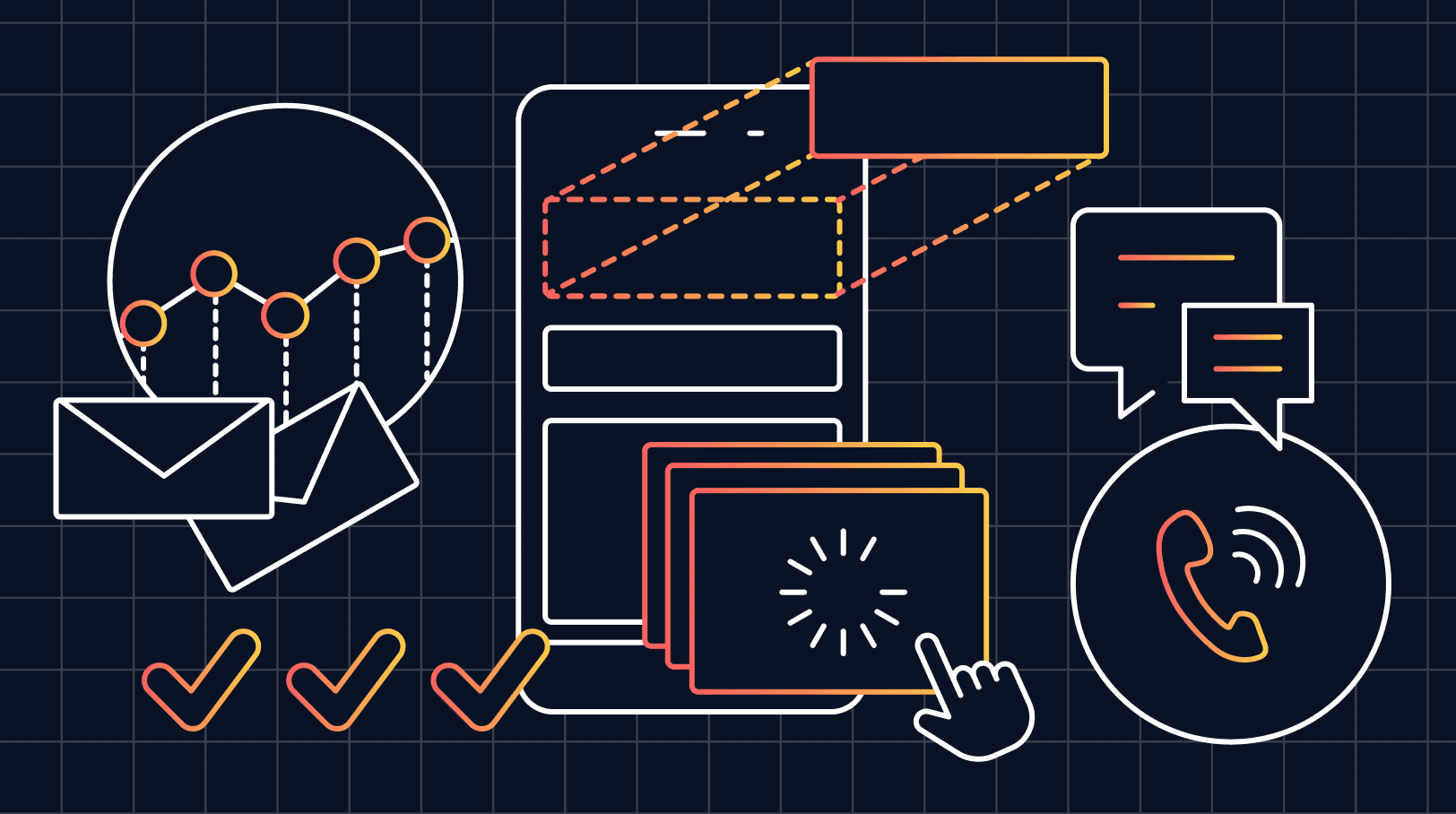If you haven’t figured it out yet, you need to prioritize the customer experience to be at the core of your business strategy. By focusing on your customers, you can open the doors to new channels of revenue and find ways of reducing internal costs related to customer interactions.
Customer experience can be defined many different ways, from how your customers perceive your brand to the journeys they take when interacting with your product or service. Arguably, one of the most important factors in customer experience is direct interactions with your brand. Through a commissioned report, we found that “there’s a disparity between understanding what customers want and delivering on those needs.”
So how do you deliver on those needs?
Starting the journey to evolving into a customer-centric business should begin by focusing on 4 key areas: user experience, processes, data, and feedback directly from your customers. We’ll cover each of these areas so that you can better understand how to think about the best way to deliver on your customers’ expectations, and just as critically, how to continually iterate on those experiences to keep up with customer demands and maintain competitive differentiation.
User Experience
Customers expect you to meet them where they are, which requires control over all digital touchpoints that a customer would use to directly interact with your brand. One of the first impressions you can make on a customer is their user experience. User experience establishes standards with what customers should expect from those interactions with your business.
Organizations small and large can benefit from delivering great user experiences through a multitude of device types.
Take Rabobank, as an example. Rabobank is a leading international cooperative bank headquartered in the Netherlands. The business development and strategy teams at Rabobank recognized a trend with their customers and the banking market at large wherein mobile experiences with brands have become the norm.
“The apps that [our customers] are getting from Apple, from Android, these are what people also expect from banks,” says Paul Kammerer, head of business development and strategy at Rabobank. “We now need to compete with those completely digital-native companies.” Rabobank is serving their 500,000 customers with a mobile app that has received a 4.7-star rating (out of 5) on the Apple App Store. Using low-code, Rabobank is delivering a user experience on par with customer expectations, even if those expectations extend beyond what traditional banks consider relevant to their business.
Processes
In addition to user experiences, you need to think of your customer experiences as more than simply the look and feel. You need to consider the processes that different customers will take when interacting with your brand.
Processes include the actions that a user needs to take in order to complete an intended action. Depending on your industry, this can include purchasing your product or service, new customer on-boarding, and extended services after a purchase. This is in no way a comprehensive list but helps to outline the extent of where customers expect great experiences.
For many organizations, this means adding more (or even your first) digital touchpoint for a particular product or service. For the Municipality of Dubai, a global crossroads with over 3.3 million residents, their IT team hyper-focused on how to improve processes for its citizens.
In just a few months, the municipality digitized over 250 services. The municipal services portal, a “single pane of glass” by which the municipality’s citizens and businesses could transact business with their government, now sees 1.5 million page views per month.
“The main goal was to meet the expectations of the citizens—the citizens are the stakeholders… all the citizens who are going to use these services, they expected and wanted easy access to these services,” explains Aysha Begum, HR and business development director at RapidData Technologies, a software development and IT outsourcing company that helped The Municipality of Dubai digitize these services.
Data
Without data, two things critical to the customer experience cannot happen: process automation and personalization. This means, without good data and data integrations, something that virtually all customers expect is not happening.
Integrations are key, pulling data from sources that can influence personalized experiences and clear up processes.
Look at Corant Global, a global leader in insurance. Their branch of marine insurance, Cyrus, needed a client portal to help better serve their clients. They created a client portal called Cyrus Bridge to help clients with claims, premium calculations, and quote buying. On top of that, Corant leveraged an integration with Lloyd’s List Intelligence to get GPS data that allows Cyrus Bridge to show the precise location of a client’s fleet of vessels.

Access to this data and having it directly implemented moved Cyrus’ offering from, as Group Head of Application Development Peter Hughes describes, “a glorified document management solution…[to] an enhanced client portal.”
Feedback
Who knows customers best? Customers. This is why feedback is another crucial element to driving customer experience. Built-in feedback loops that are embedded into the development process (and sometimes even right into the product) are great ways to gather quick information as to how a customer is using certain feature or capability. It lets you look, gather, analyze, act, and repeat.
Feedback loops help too because customer experience is never done. Customer expectations continually evolve as technologies change and the world adapts.
Collin Crowdfund, a financial institution looking to reshape the business loan process, wanted a one-stop-shop application that could handle the back-office processes of loan application, manage all the necessary banking transactions, connect with the correct vetting and approval entities, and maintain a high level of security and compliance.
Collin Crowdfund is perpetually evolving its platform based on feedback from loan applications, investors, and employees. Innovation is a constant and the result is a modern crowdfunding platform that is always getting better.
Focus on CX
Focusing on these 4 key areas can help pave the way for great customer experiences. These areas are critical because CX is critical. Investing in customer experiences improves customer retention, enhances brand reception, and provides a sharper competitive edge.

